I want to begin this week’s blog by saying its wonderful to have ALL our “@gmail.com” subscribers back with us effective last week’s blog. For some reason, known only to the technical gurus at Google, for several weeks in February many subscribers with Gmail accounts saw our www.OneEndlessRoad.com blog go directly to their junk/trash folders ( if you are a Gmail subscriber and missed the last few week’s blogs, that’s where they went ). In any case, all seems to be well again as of the last blog – just wanted to assure folks it was nothing we did at our end. Thanks to all the gmail subscribers who pointed this out to us.
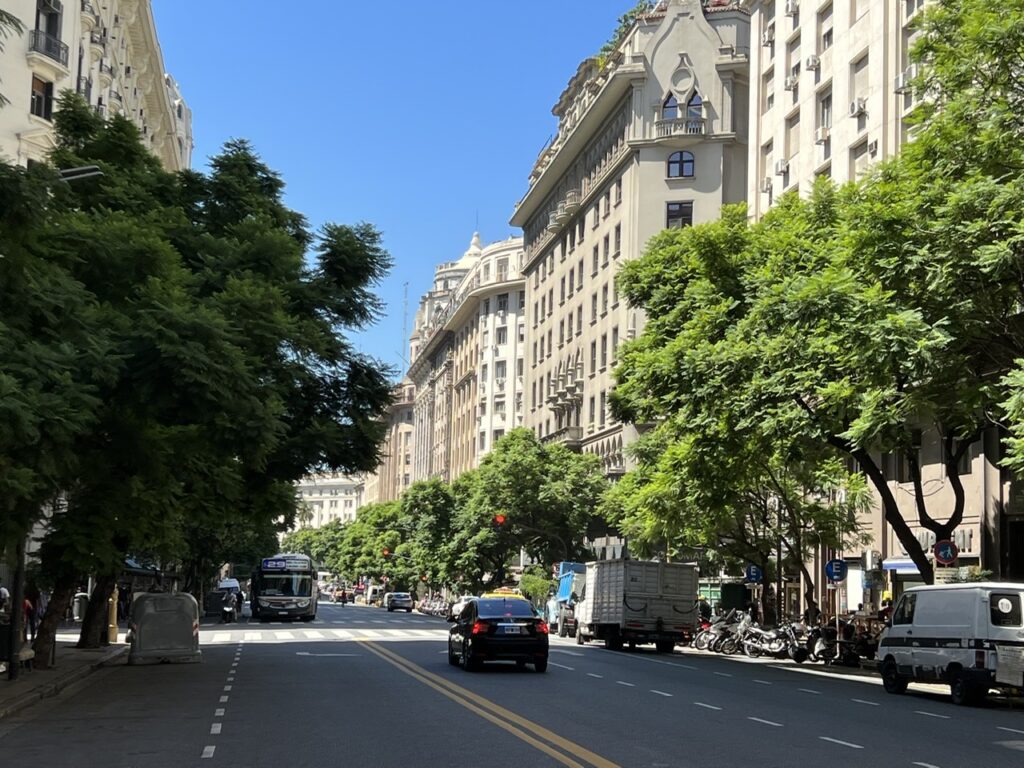
It’s been surprisingly easy to adjust to life with no “wheels” due largely to the fact that we are very comfortably ensconced here in beautiful Buenos Aires, in the heart of downtown and with everything we need literally at our fingertips. Someone else makes the bed each day, cleans the room, and generally attends to anything we need – feels totally luxurious and we are enjoying being just little a bit spoilt….!
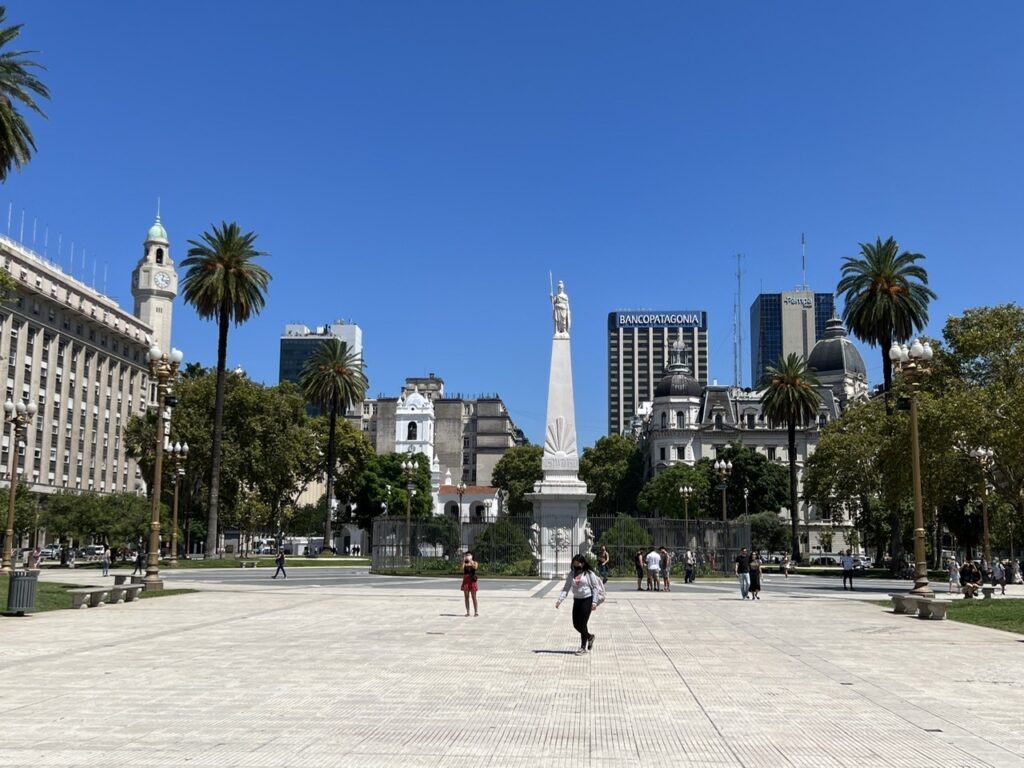
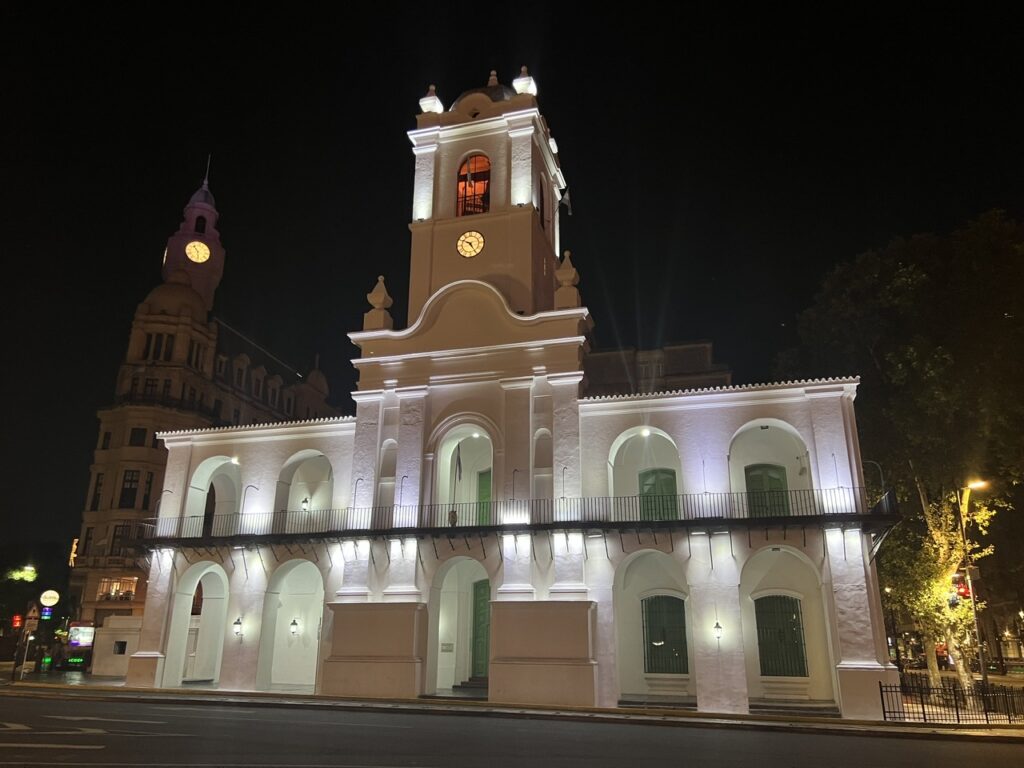
Buenos Aires must be one of very few cities where the cemetery is a major tourist attraction in itself. There are many famous Argentines buried in “La Recoleta Cemetario” but surely none more globally recognized than Eva Peron – better known as “Evita” and Argentina’s one time First Lady. Revered here, she died young, at just 33, and ( after a somewhat tortuous journey to her final resting place ) is now buried in the Duarte family crypt in Recoleta. Beyond Evita’s grave the cemetery is like a mini city within a city with some of the most ornate resting places imaginable – perhaps appropriate given that Recoleta itself is probably the most desirable suburb in Buenos Aires – there is no shortage of wealth here.
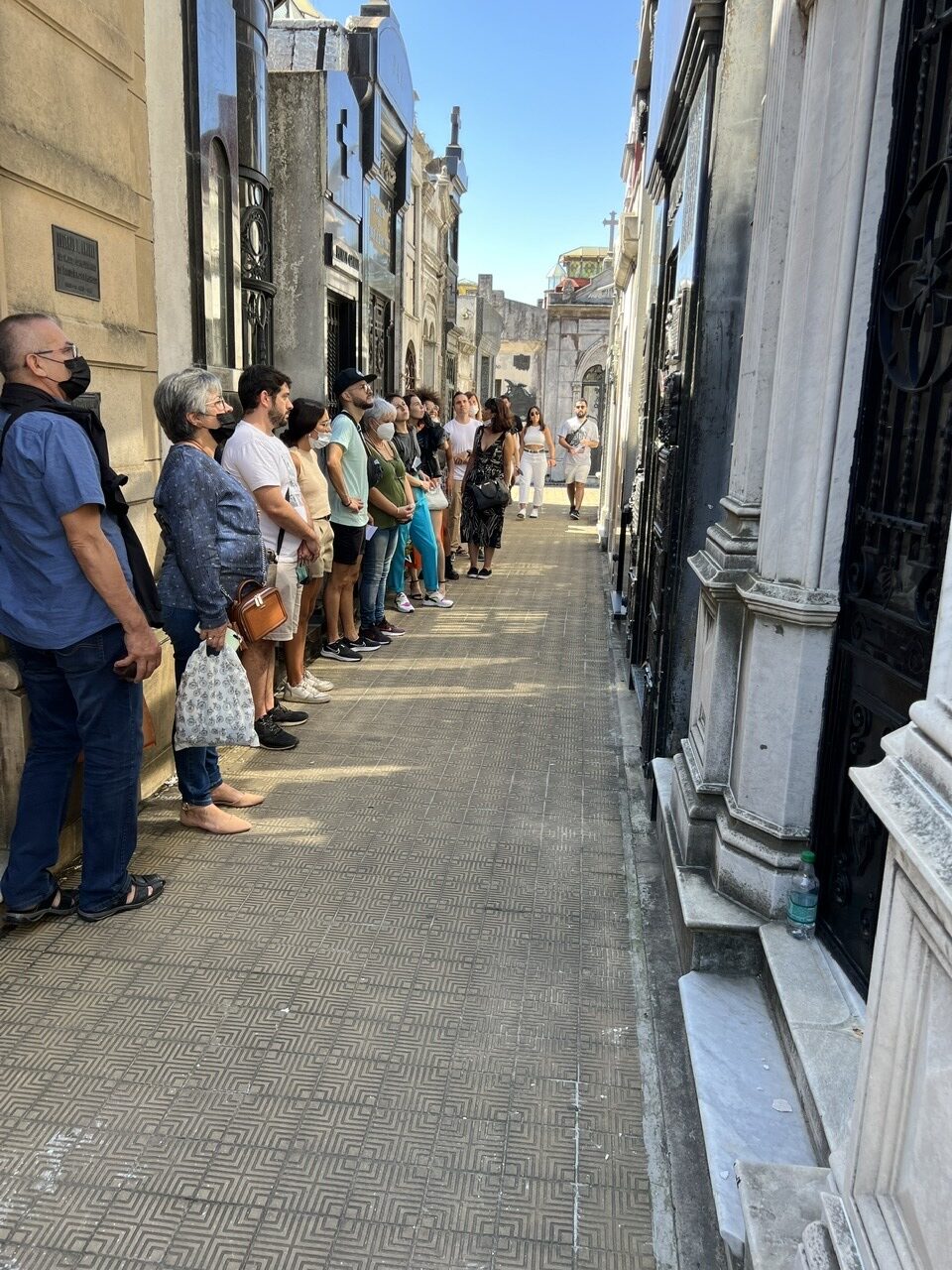
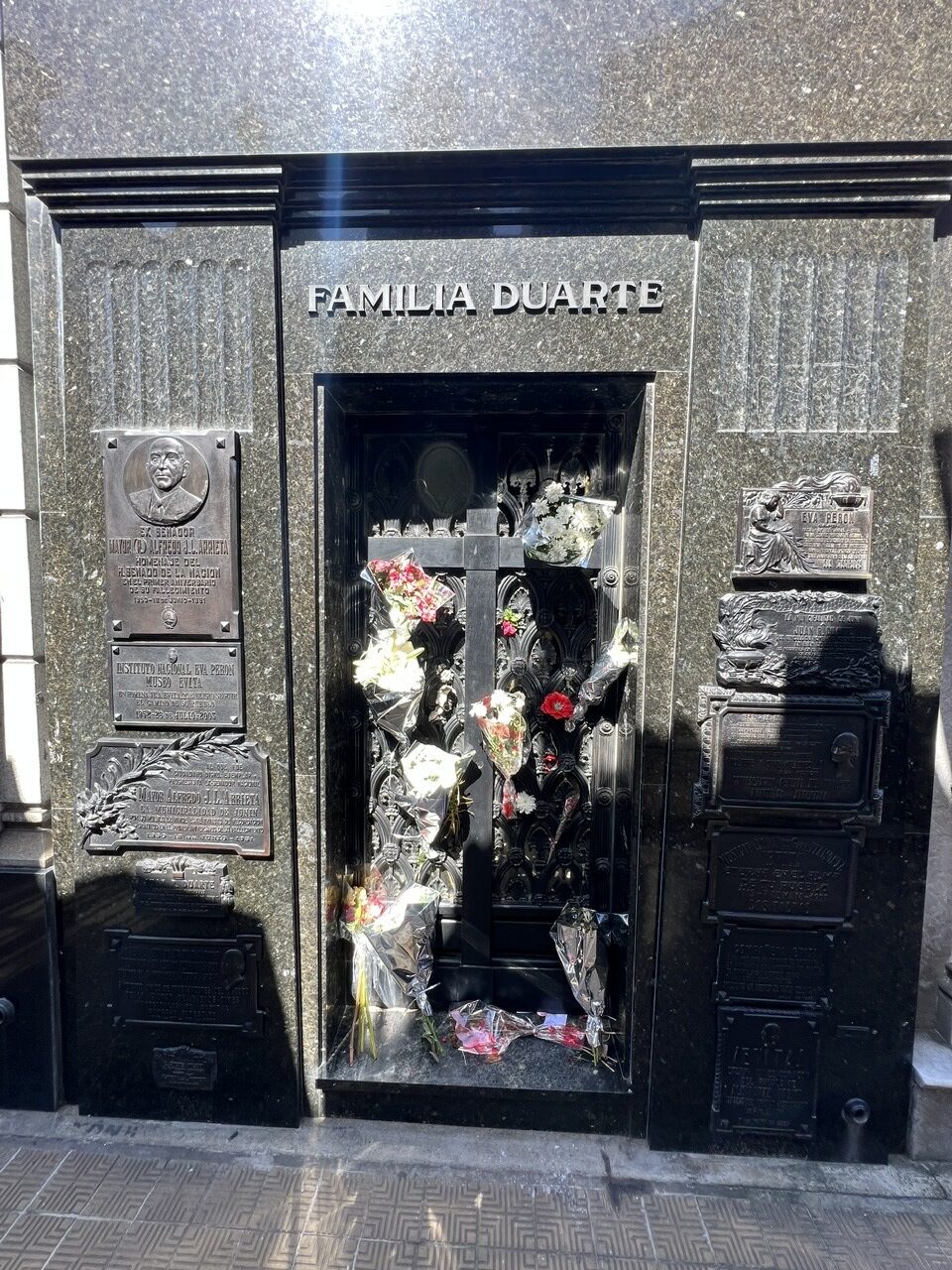
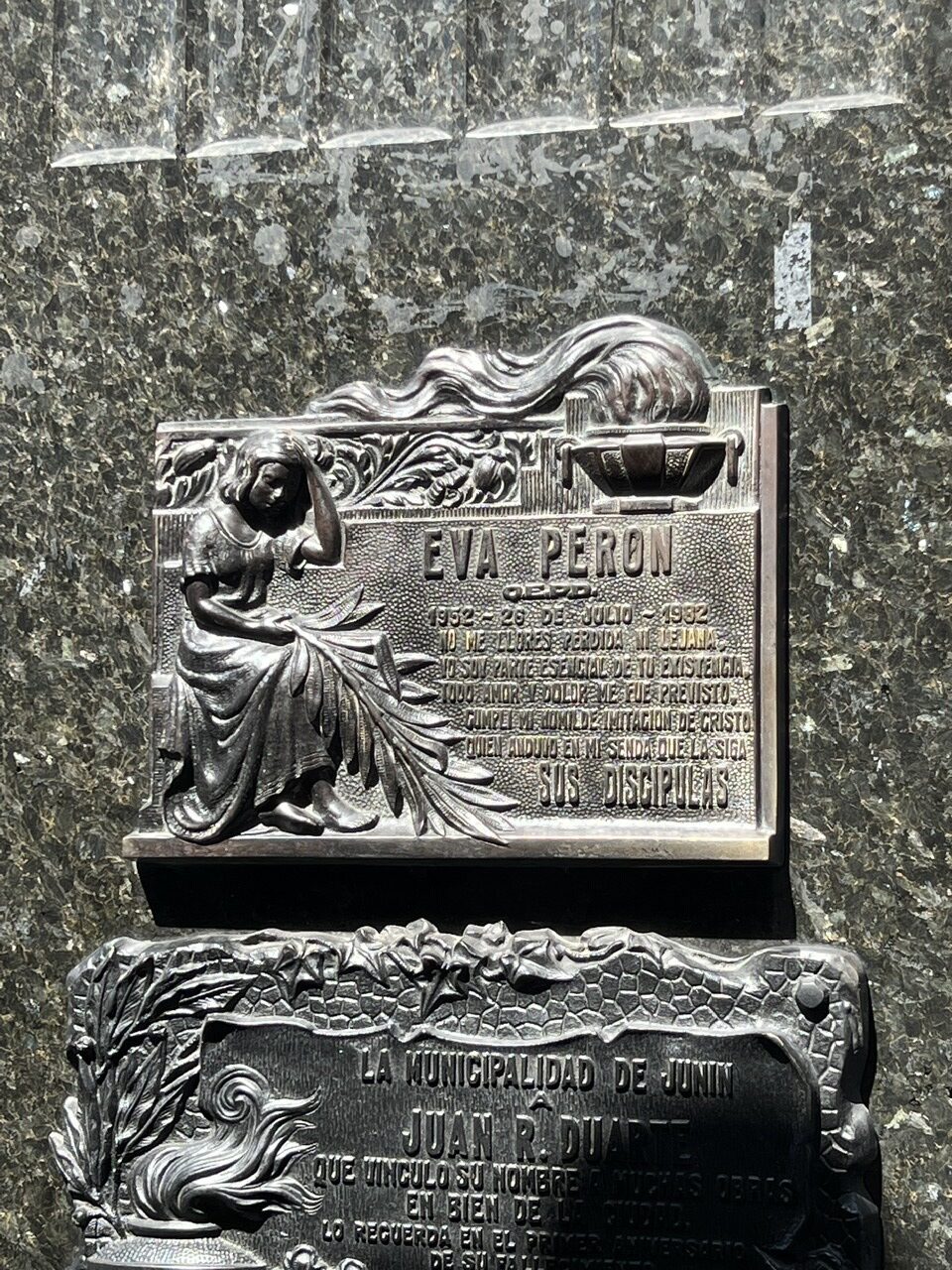
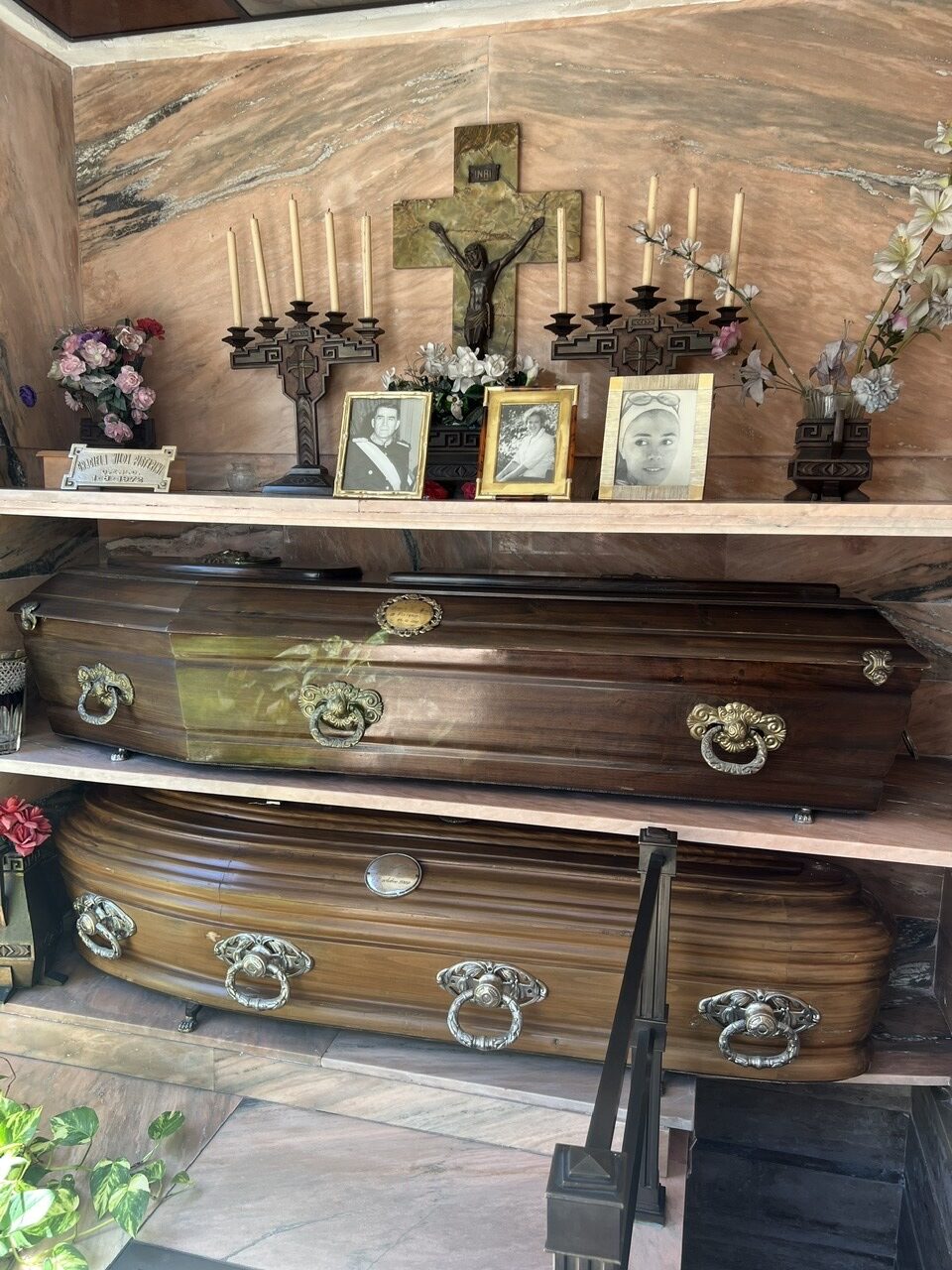
For the first few days in the city we’ve been tending to some administrative matters that were overdue, catching up with other travellers we’d recently met and simply ambling around and starting to explore this vast city. Coincidentally, as I was typing this sentence, a note popped up in my email – from the shipping company – advising us that “Your vehicle was successfully loaded on the ship”. At least we now know it’s on its way.

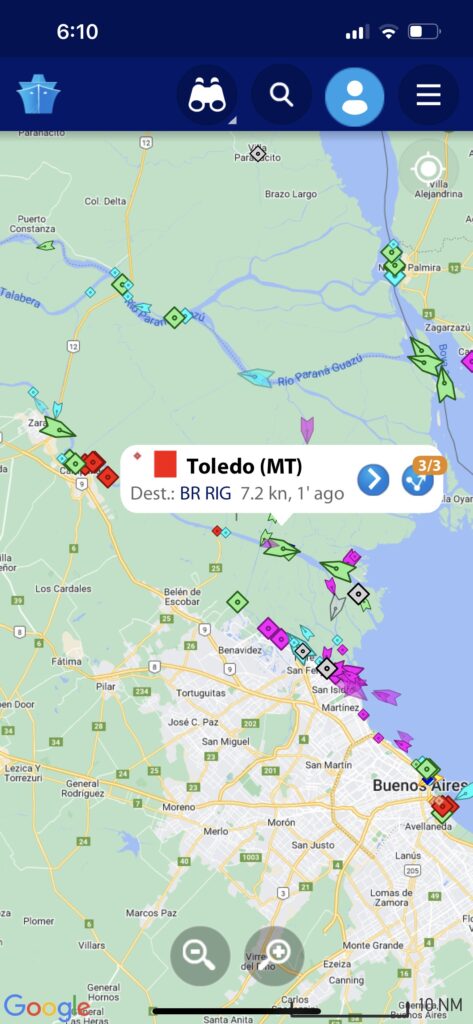
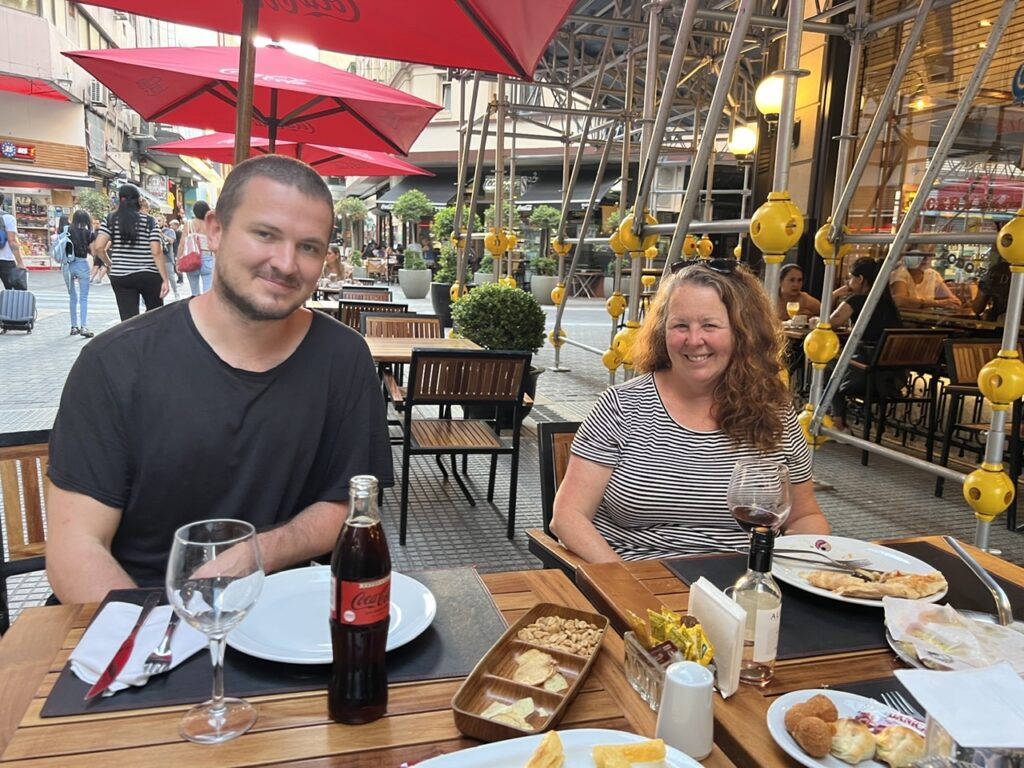
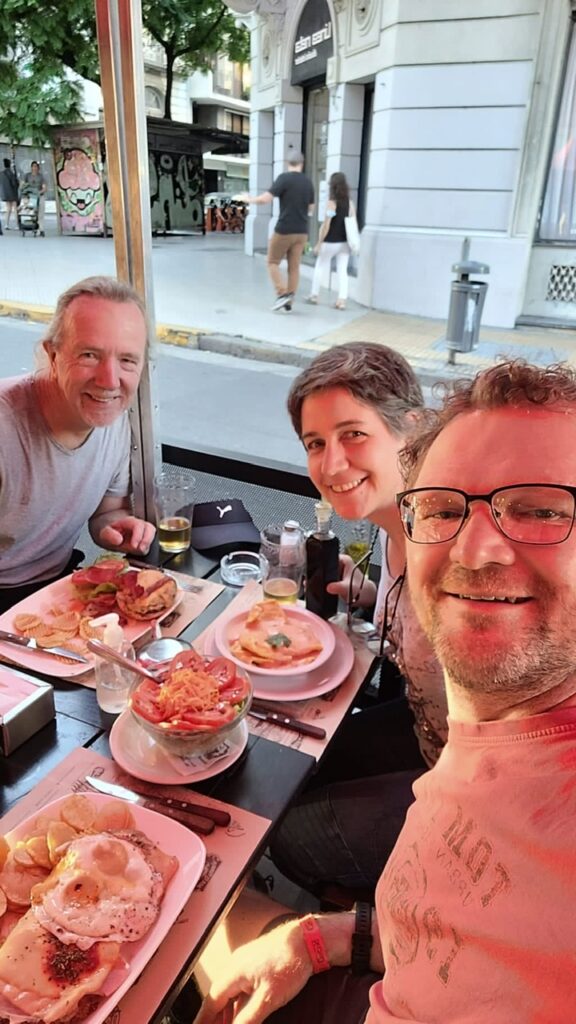
There were a few places of note that we visited this first week in the city ( beyond the Recoleta cemetery). Just as the US has the “White House” and the South Koreans have the “Blue House”, the Argentines have the “Pink House”, or Casa Rosada. We may even have caught the President coming and going since a very official looking blue and white (the national colors) helicopter landed and then later took off from the helipad adjacent to the Casa Rosada while we were walking by – lots of police in the area and protesters nearby, so something significant was going on at least. Our hotel is located close to the “Obelisk” a giant BA landmark, located in the middle of Avenida 9 de Julio, generally considered the widest street in the world. With dedicated bus lanes in the middle I think there are 20 lanes on this crazy wide street – there are 3 or 4 pedestrian traffic lights sequentially timed just so you can cross it but almost always with a significant wait in the middle. As grand boulevards go this one is indeed impressive. Wandering around the city there are countless historic buildings, chic neighborhoods, leafy parks, and famous restaurants so we are trying to spread our visits to them all over the time we are here.
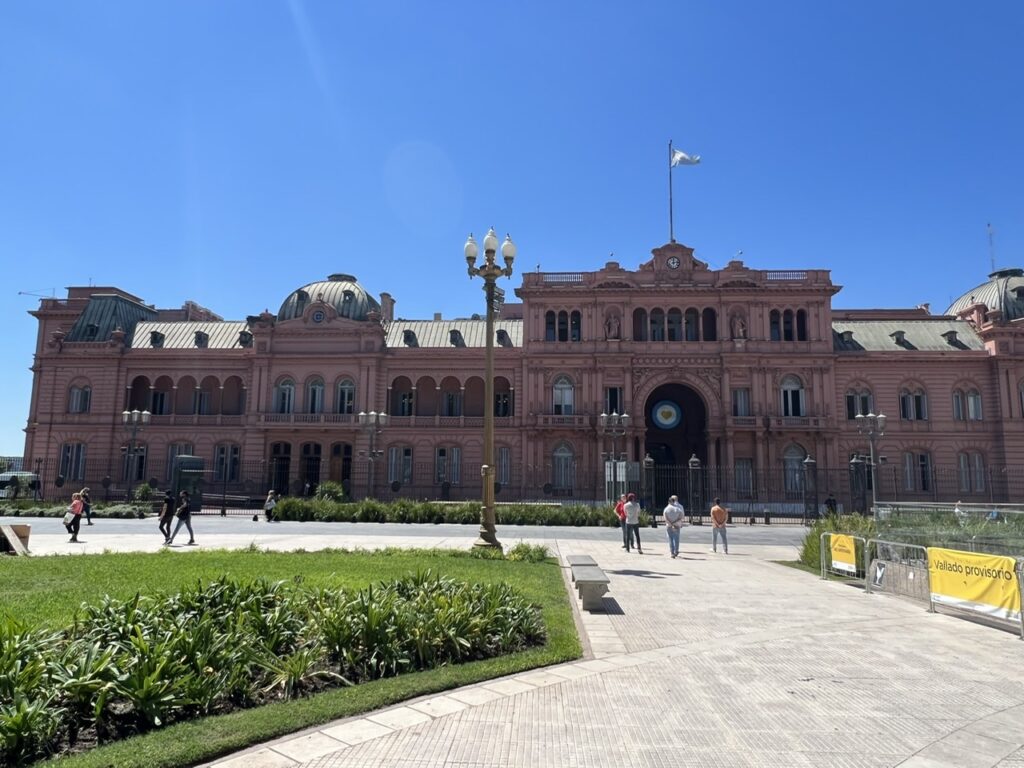

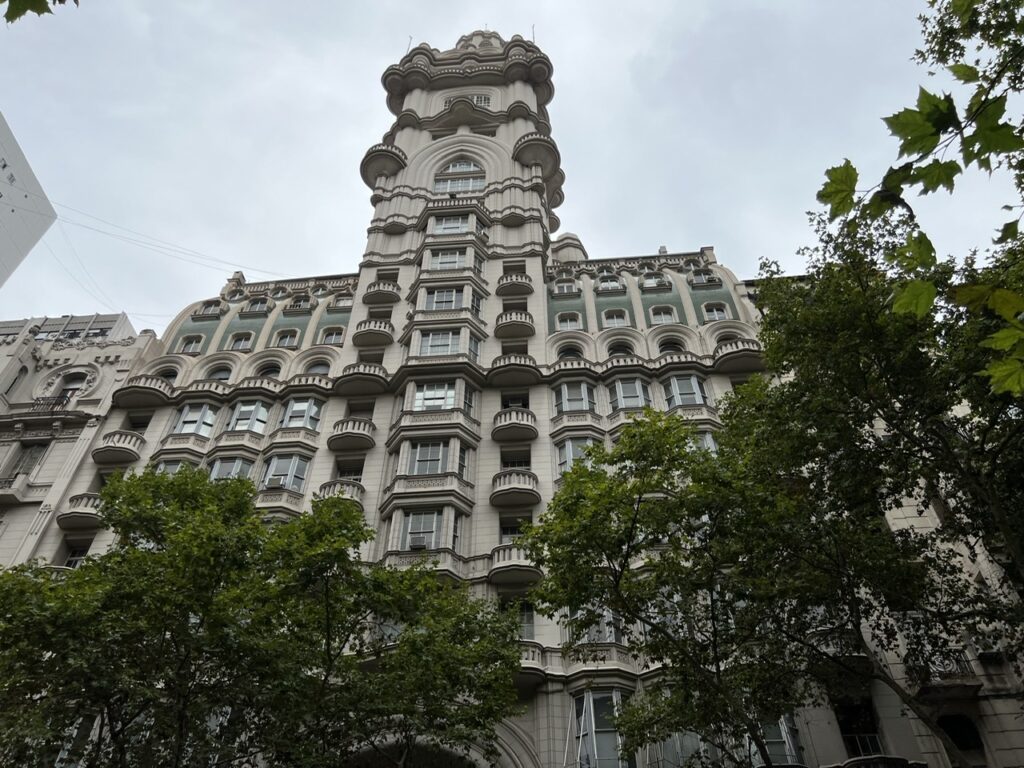
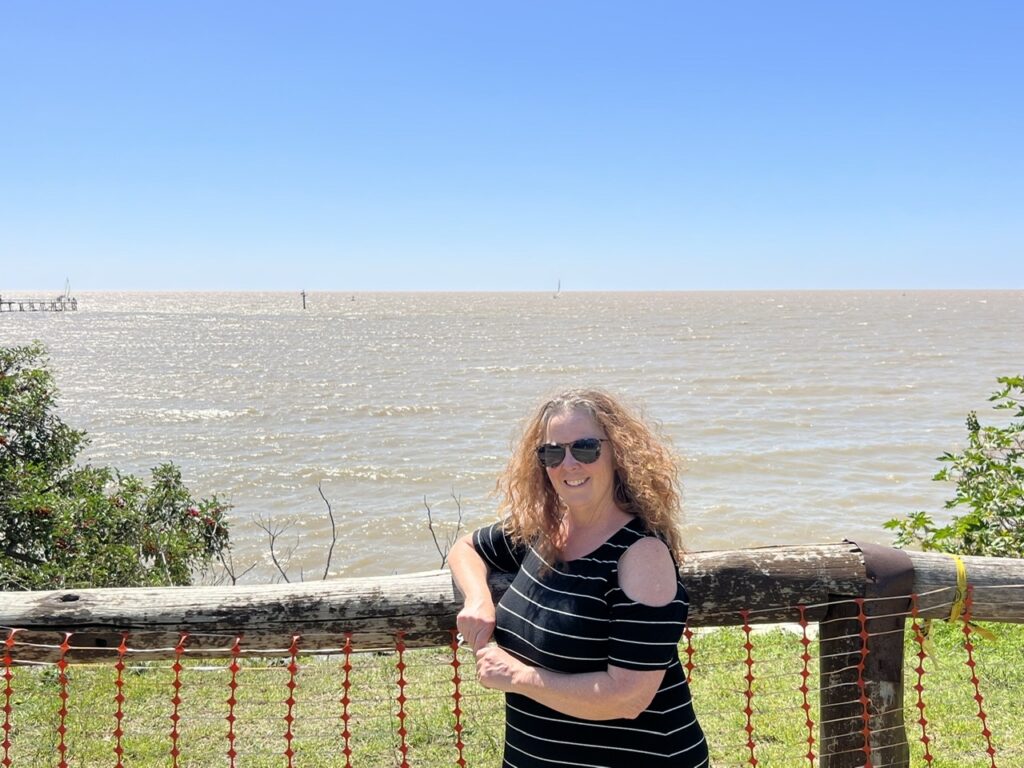
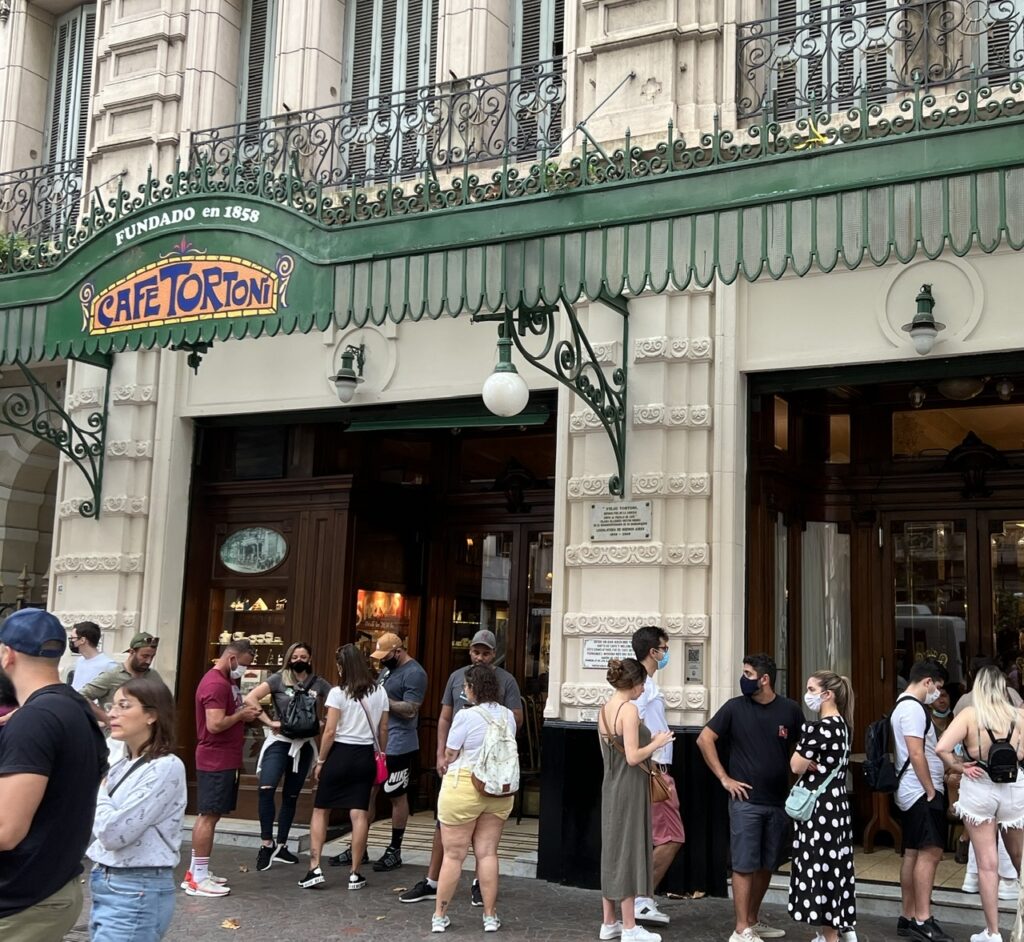
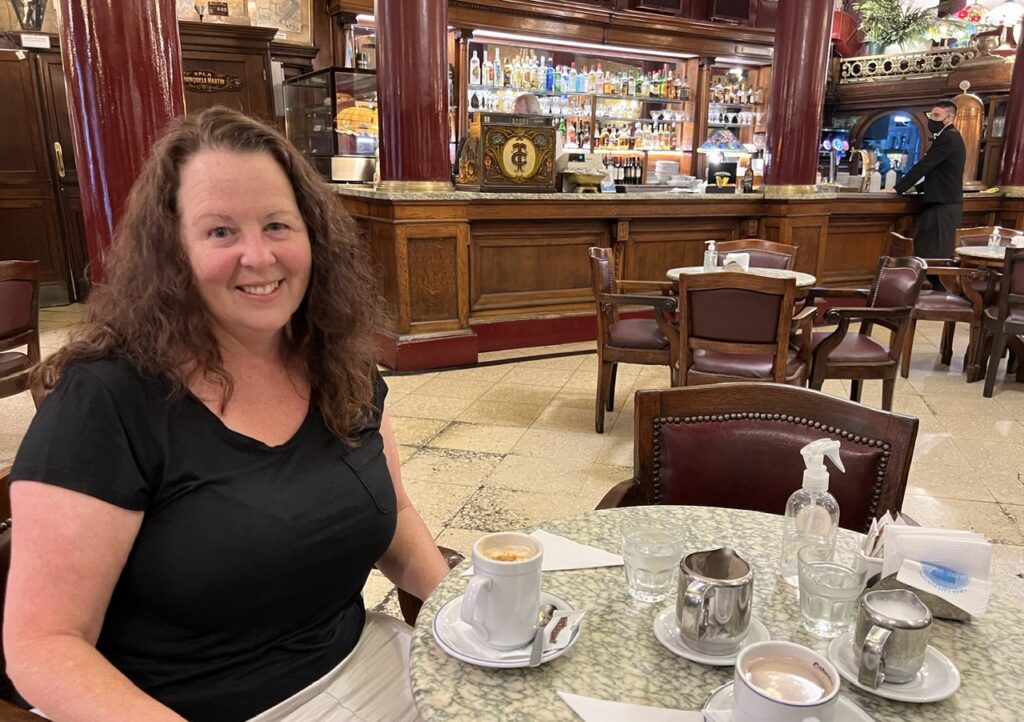
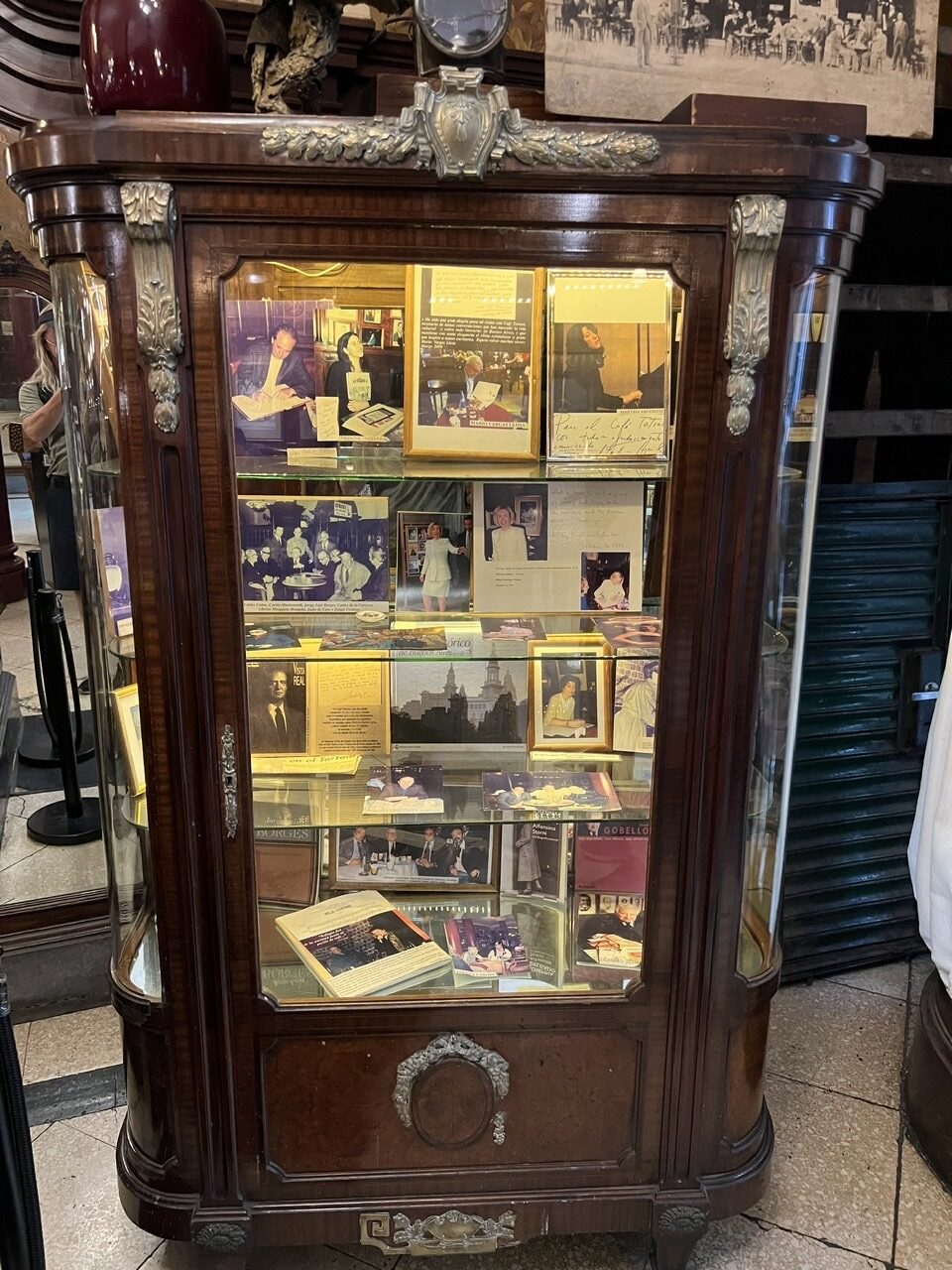
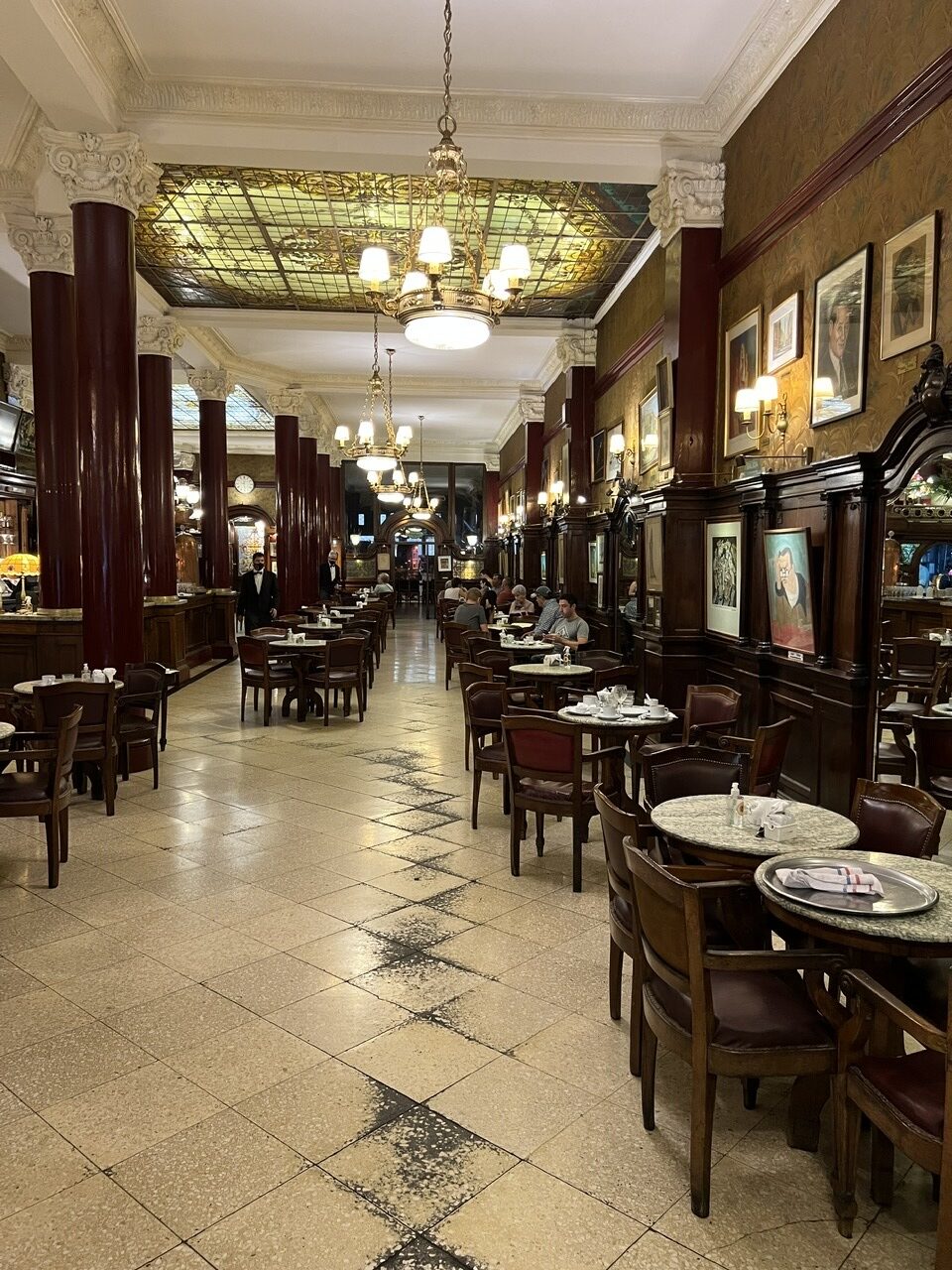
I’ve mentioned before that for most people who travel extensively in South America, BA is easily the most popular big city. It certainly is ours. The impressive architecture, the distinctly European feel, it’s vibrant cafe culture, a very pleasant year round climate, relative affordability, it’s ease of getting around …..one could go on and on. One thing is certain – with 15 million out of 45 million calling BA home, the city dominates the rest of the country like no other in South America. More than 1in 3 Argentines live right here.
Like all big cities though, it does have its dark side and you don’t need to be here long to come face to face with it. Argentines we’d met before coming to BA warned us about crime in general and to be wary of specific parts of the city and walking at certain times of the day – warnings we have obviously heeded. Two things so far though have stood out – graffiti and homelessness. The graffiti is everywhere and sadly it’s not just contained to the usual political messaging spray painted on a blank wall ( that, tragically, exists in many countries ). We’ve also seen many of their grand buildings vandalized with it and even centuries old iconic statues of heroic independence figures ( of which there are many ) are not left unscathed. Absolutely heart-breaking.
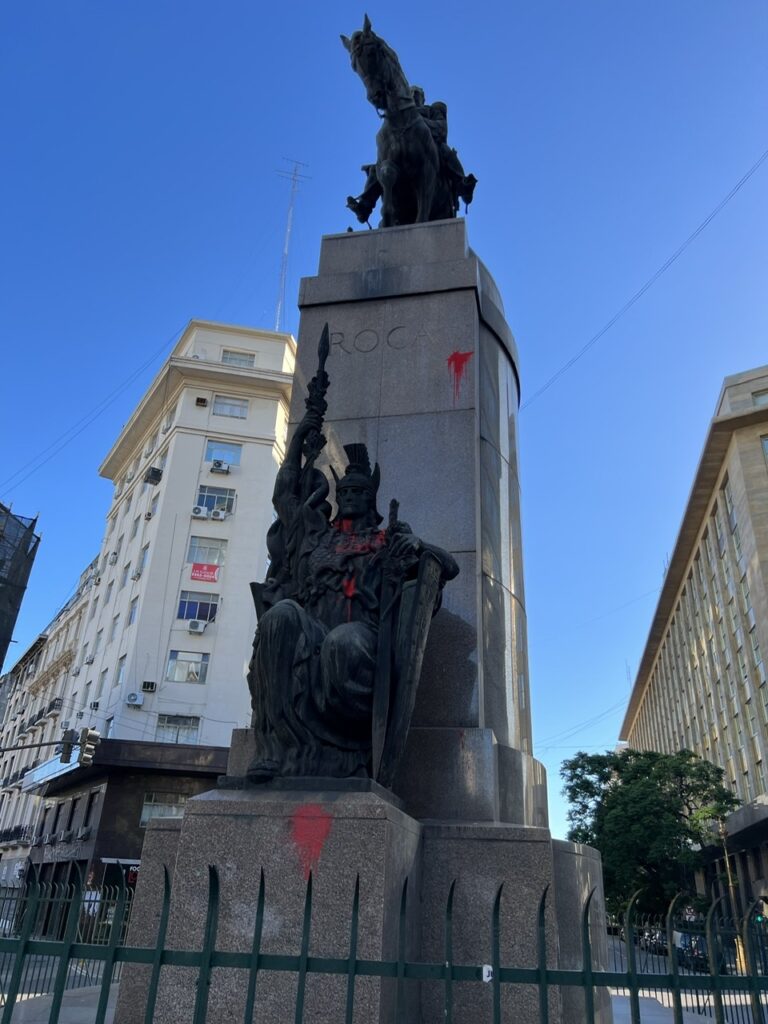
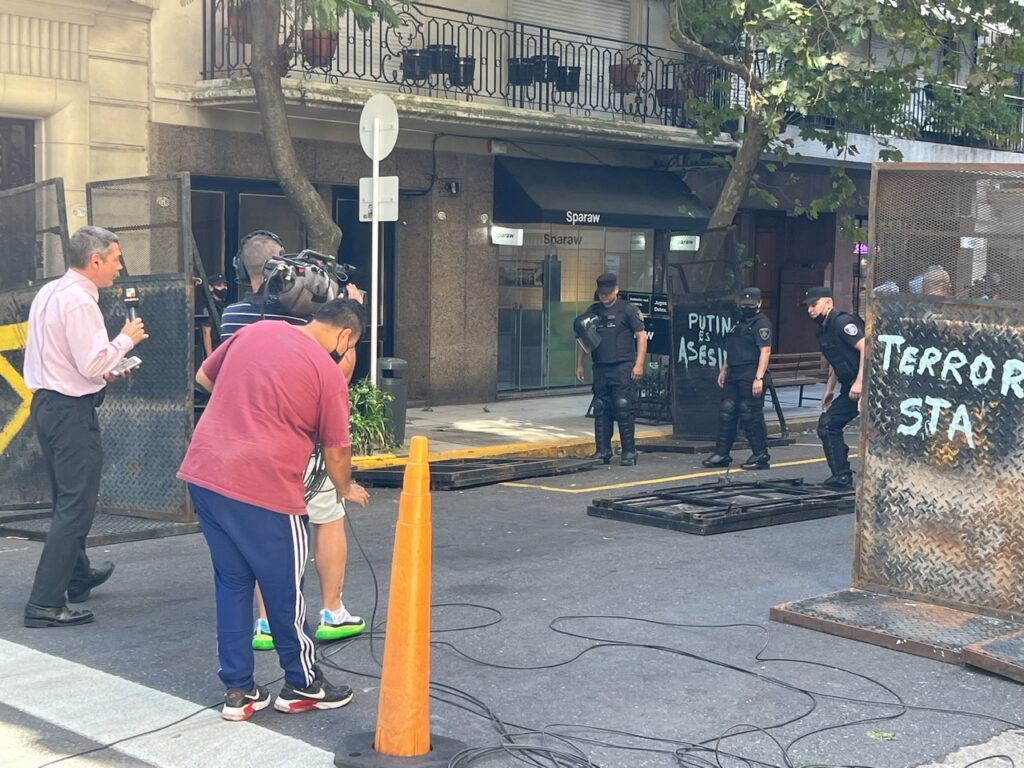
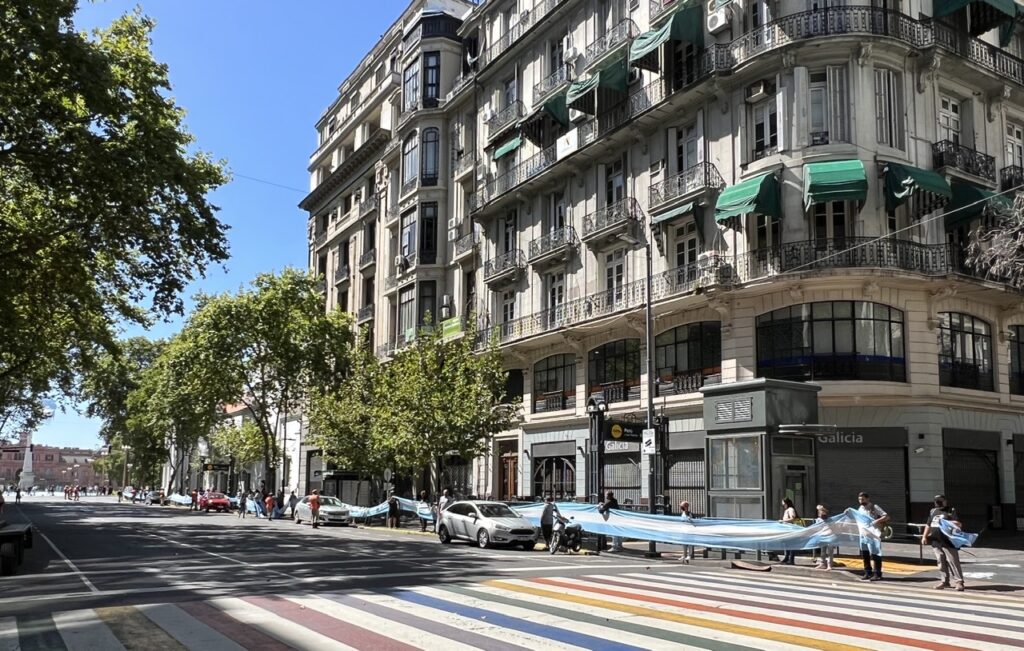
Homelessness seems more visible here than elsewhere in the country but I am sure its an issue everywhere. It’s tragic to see and more so when you see young kids sleeping in the street as we sometimes did. With the homelessness comes begging and it was unusual not to be accosted while eating dinner ( restaurant seating here often flows on to the sidewalk and we often sit outside to reduce the risk of a Covid infection ). Most are polite and leave when their overtures are declined. But, I have to give credit to one particularly creative woman who approached us one evening while we were sitting in an outdoor cafe with our Swiss friends. She’d gotten declined by all the Argentines she’d approached and then spotted us. Either she couldn’t speak or just preferred to hand out a crumpled note describing her plight – written, of course, in Spanish. We’ve often handed over a small donation in such cases but we don’t always. Having made a donation to another such cause earlier in the day I decided to politely decline this one and when asked for a donation, responded with our stock ”Solo Ingles” – very abbreviated, and deliberately grammatically incorrect, meaning we only speak, ( and thus only read ) English. No sooner had the words left my lips than she smiled and turned over the scrap of paper…………..there, in perfect English, was a translated version of her tale of woe. Trapped now, as they realized I obviously was, our Swiss friends could not contain their laughter ( I thought it was pretty funny myself).
Needless to say I made a second donation that day ……😊

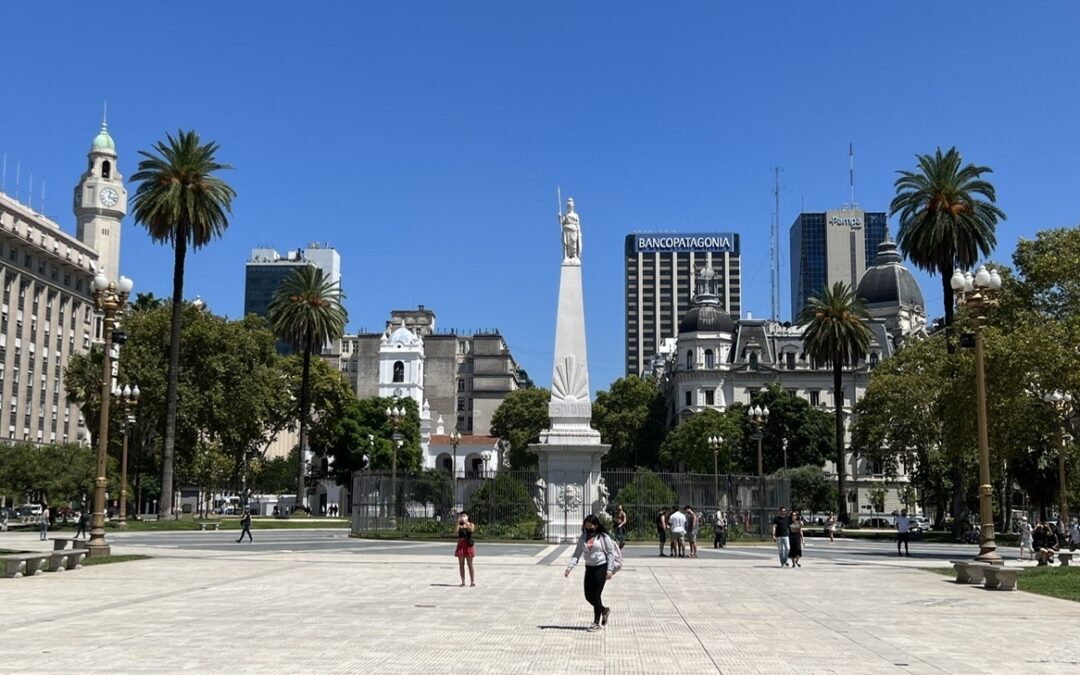

What a wonderful trip that you guys have taken it would have been the envy of my younger life so many people and places that you have been good luck for the rest of your journey
Thanks Bill, and yes, it’s been quite the ride ( or should I say, drive )!
Glad everything is going to plan. Love the Evita story – have you seen the movie? You’ll have to now – it’s brilliant. Make sure you also go to a Tango dinner show too – amazing dance routines. We are gearing up for our next Aussie adventure in a couple of weeks. Hope to be away til late Sept. Make the most of the rest of your South American sojourn.
Hi Anne,
Well, so far as we can control the “plan”, yes, reasonably well anyway. Sadly the ship is already 3 days behind schedule so we are delaying buying flight tickets to the US until we get more clarity on an arrival date there. Seems so many ports are congested these days and even if your ship arrives on time it can’t always dock as scheduled. Our problem is there are 7 stops between BA and Georgia in the US….so some more potential delays.
Glad to hear you are blasting off soon….WA has finally joined the party it seems so now you can go anywhere !
And, weird as it seems, we have not yet seen Evita,the movie, but we are planning to see it. We have been to a tango show ( last time we were in BA – it was awesome ! ) but plan to see another one this time around.
Good to see the blog is back! I recently used that ship tracking app as well…. For the dump truck I purchased from China. How many more days in BA?
Hi Chris,
Yes that app is quite handy. In fact we use it to track the ship’s progress so that we can better estimate its ETA in Brunswick, Georgia which is where we get the truck. If it gets to the US on April 3 (as is currently predicted) I think we will stay here in BA till approx April 16/17, then cross over to Uruguay where we will spend 10 days or so before flying to Miami from Montevideo. Hoping to be in the US a week before it arrives in port.
Hope the new gig is working out well.
You mentioned a couple posts back about the challenges faced by fellow overlanders who stayed behind in South America when COVID started and did not return home as you did. Would love to hear more about those challenges and experiences some day when you have time. Always enjoy your posts and photos.
Hi Don,
Happy to fill you in on that. Based on those we have spoken to, the key problem was the inability to travel around ( for much of the time anyway ), so I guess it depended where you got stuck. In the early COVID days there was fairly open hostility to some foreigners due to misplaced fears that they may have Covid ( that did eventually calm down though ). I think the other thing was that it was difficult for them to leave ( if they did want to ) after a certain point when flights became restricted. No fun when you want to leave and can’t.
Hi from Kelowna. We’re absolutely loving your blog and travelling along “ virtually “! We can sure relate to your comment about making sure you don’t venture into unfavourable areas of BA as we have vivid memories of being escorted into a taxi by five police officers as we wondered off course on our way to our ship!!!!
Hi Darlene !
Glad you are still enjoying it. BA’s a big place indeed, easy to get lost, but having been here 10 days already we are now starting to find our bearings. With our ship to the US already 3 days behind schedule we may be here longer than we’d expected. Taking it slow……!
We have been in Buenos Aires a few times and found is so attractive and clean. Thanks for sharing great memories.
Indeed, Abe. We spent much of yesterday wandering just some of the many parks and commented on the same thing. Not only that but it’s so big – we’ve been here 10 days and will easily fill another 10 I suspect!
Hi Jeff and Lois. As usual we love reading about your travels and very much look forward to when our own travels can resume. Hope the truck is not badly delayed and we look forward to the next instalment xx
Hi Fiona,
Yes, we too are anxiously awaiting the safe and timely arrival of the truck in Georgia.
Wonderful to see that Oz has finally opened its doors so you are free to roam now. Hope our paths cross in the next year or two !
currently have a GMC3500 dually & Arctic Fox 990 camper. Questions based on your experience:
1. Will this setup work or do we need a camper like yours
2. Is gas or diesel mostly available?
Is the diesel “clean”
3. Would a Sprinter type class b work? Better?
4. Do you have air conditioning & do you feel it’s needed
Hi Ottis,
Let me go through your questions in order:
1. It will work and be very comfortable no doubt but there will be times when you wished you had something slimmer. Everyone, and I mean EVERYONE, that looked at our truck/camper said how ‘Grande’ ( big ) it was. We laughed because in North America of course it’s the baby of the fleet ! Parking spaces, city roads, driveways etc are just generally made for smaller vehicles and 99.5% will be smaller than yours. I think your challenges will be with the width as much as the height and length. We often wished ours was shorter as well. Much of the time you won’t have an issue ( outside the cities ) but there will be times you’ll curse it. Reach out (Google ) to Mike and Geneva ( Itsnotafastcaritsaslowhouse ) who had a full size camper like yours and they went all over S.America with it and could better comment. I would not sell it, I’d use it, but just be prepared for times where you will be squeezed for space.
2. Yes, both are widely sold. In most countries now it’s “clean” (ULS) and I saw DEF in a few places so it’s out there. Bolivia is reported to have the worst quality diesel. We had gas so never had to pay attention but saw a few modern ( post 2008 ) North American diesels around. Marcus Tuck ( tuck struck.net ) does a great piece on this topic. Far more detail than I can offer and he drove a 2013 Euro diesel all over with few issues. Super knowledgeable guy.
3. I am a big Sprinter fan and they are hugely popular – probably the most universally sold rig among overland travellers. That said, most that I have seen have not been “class B” ( wide body on chassis ) versions, although we did see a couple. It’s always a trade off – more space, and walk through possible with a Sprinter van but extra width if you go Class B style.
4. We do not, and “mostly” we did not miss it, but when you do miss it, you REALLY miss it. I hate being hot and sweaty especially at night ( humidity was unbearable in Baja in August at night ). I’d be tempted to have it if I was doing it over I must say. There are some good 12v systems now for area cooling and we will be looking at such a system in future. If you stay away from really humid places no issue. It’s the humidity that gets you, not the temperature ( a good fan can deal with heat alone ).
Hope this helps, send me an email if you have more specific questions, there is a “contact us” option on the site. Ciao !